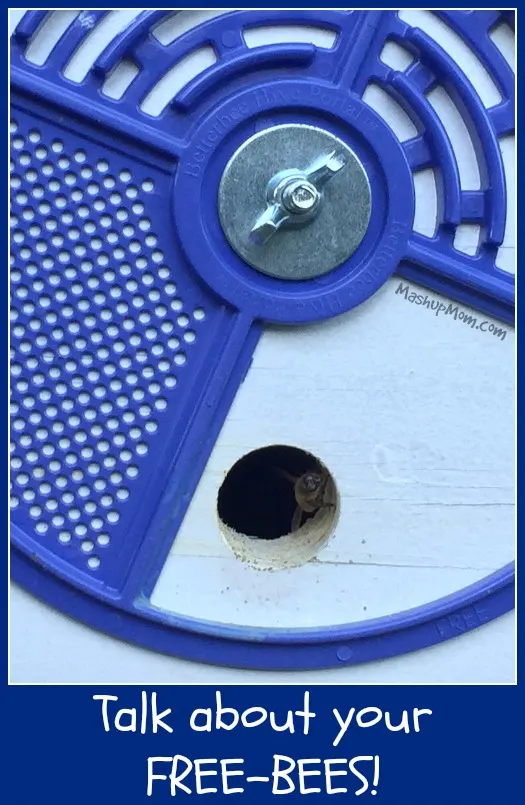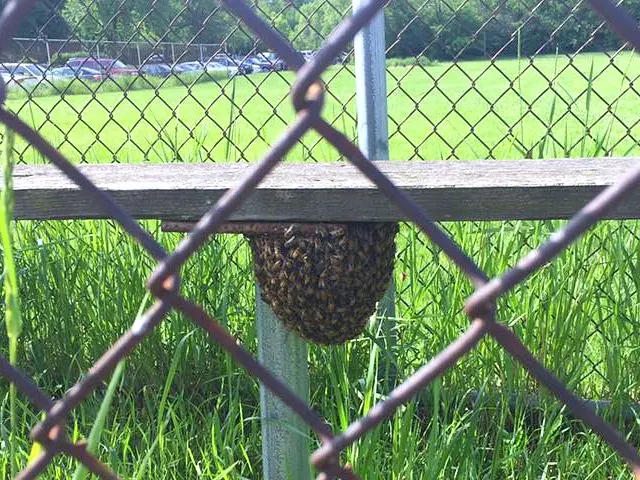
I've been out all day at a parent-child IMSA orientation, so let me just leave you with a little light viewing material this evening! MashupDad has had a few swarm traps out in our yard and at friends' & neighbors' homes this year. What's a swarm trap? Well, when honey bees get too crowded in their hive they will decide to swarm, which is where a bunch of worker bees and their old queen split off from the hive and go out to form a new colony.
Never fear: They create new virgin queens before they go that then continue with the work of the original hive. Swarming is the way in which honey bee colonies naturally reproduce themselves; one hive can turn into two or more this way.

Swarms will hang out in an interim location for a while and start sending scouts out to find a suitable place in which to build a new home, which they need to do within a few days. They'll often ball up in a big mass of bees (as they're doing above) while sending out scouts to locate a new site. The swarm above was actually hanging out under the bleachers at Mr. 10's old school last spring, and they called MashupDad to come and take them away! If you see a cluster of bees like this, they're not wasps, aren't aggressive unless provoked, and shouldn't be sprayed; contact a local beekeeper and they'll be more than happy to come and get them for you. 🙂
MashupDad should soon able to transfer these bees from the swarm trap into an actual beehive, having captured himself some... free bees. This is a big deal because bees are expensive to purchase commercially, and because wild bees are often hardier and better adapted to the conditions of a specific area. Swarming happens most often in the spring but can happen throughout the summer; the earlier in the season the better so that the hive has time to become established and build up honey stores before the winter.
There you go: Free bees; how cool is that?! And here's where you can follow MashupDad's ongoing adventures in beekeeping.

Mandy
Monday 26th of June 2017
This bee operation information is very interesting. Thank you for sharing.
SmartShopper
Sunday 25th of June 2017
Awesome! Love that your family is helping protect the declining bee population. We need them!!
Meg
Sunday 25th of June 2017
Hi Rachel! I saw you at the IMSA orientation. My daughter was one of the volunteer senior there. I wanted to come and say hello! but you were leaving and I was there to pick up.
rachel
Sunday 25th of June 2017
That's awesome! LOL, could you tell I was pretty done in after over 9 hours of orientation...? ;)
Kari O.
Saturday 24th of June 2017
That is really cool!